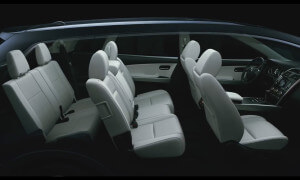Sport-Utility Vehicles (SUVs) are generally classified into three groups and; compact, midsize and full-size — though the range of vehicles within each group varies widely. You ought to know some of the guides about these vehicles, which include; engine power, towing ability, passenger room and price among others.
Car-Based vs. Truck-Based
Car-based SUVs (typically known as crossovers) generally provide attributes associated with cars, like sharper handling, better fuel economy, a quieter, more comfortable ride, and more interior room. Truck-based sport-utility vehicles are sturdier but heavier, can tow more weight and generally provide better off-road mobility.
Price
Compact SUVs are the most affordable, and prices for base models start at less than $ 20,000. Mid-size and full-size SUVs vary greatly, with base models starting in the mid-$20Ks and going all the way up to the mid-$40Ks. Luxury SUVs start around $ 32,000 and can top out at more than $ 100,000.
Engine/Fuel Economy
Compact SUVs offer both four- and six-cylinder engines. Midsize SUVs typically come standard within six cylinder engines, but can be had with four-and eight- cylinder power plants as well. Full size SUVs feature V8 engines. The most economical four-cylinder compact SUVs can achieve combined mileage figures in the low-to-mid 20s, while most six-cylinder SUVs average in the upper teens. Full-size vehicles generally get between 12 and 20 mpg.
Safety
Check the availability of features like anti lock brakes, front-seat side airbags, full-length side curtain airbags and stability control. Features like rear view cameras, parking sensors and knee airbags should also be available in these SUVs.
Luxury Features/Convenience
Luxuries like automatic climate control, heated seats, iPod interfaces, navigation systems, keyless start systems and Bluetooth capability can often be found in all utility vehicles.
Passenger Capacity/Interior Space
All but a few SUVs are designed to carry at least five passengers. Most compacts provide enough rear legroom for full-size adults, with several offering fore-aft seat adjustments to extend either passenger space or cargo capacity. The same goes for larger SUVs, but these wider vehicles are more likely to accommodate three-across seating.
Cargo Capacity
Every SUV allows you to fold or remove the rear seats for more cargo capacity. Full-size SUVs offer cargo areas in excess of 100 cubic feet.
2WD/4WD/AWD
Two-wheel drive (2WD) means that only the front or rear wheels provide power to the vehicle. Four-wheel drive vehicles allow the driver to select either two or four-wheel drive, and the four-wheel drive system sometimes features dual –range for even more traction.
Operating Costs
Since compact SUVs are generally smaller, lighter and have less complex four-wheel-drive systems, maintenance and fuel costs are generally lower. With larger size and larger engines, midsize and full-size SUVs by and large get worse mileage and are more expensive to insure. This is especially true of truck-based models.








